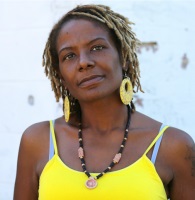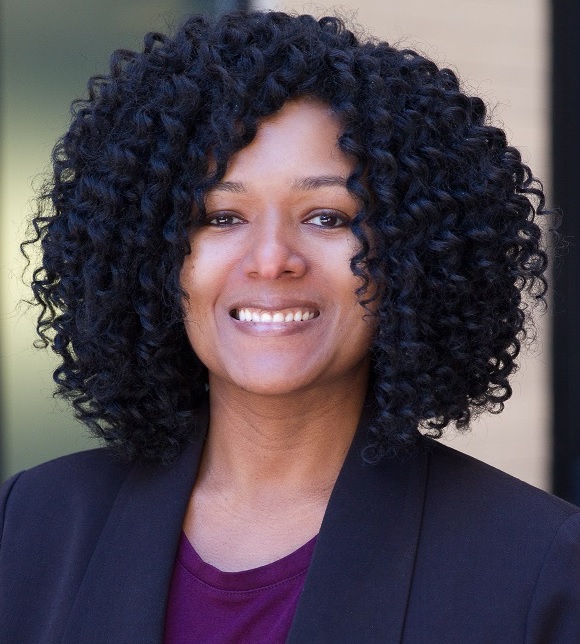![]() While awareness of sex trafficking has grown, too little attention is given to how this terrible violence impacts girls of color. In Washington, D.C., Courtney’s House is the only survivor-led program serving trafficked youth. Of the young people who receive services from Courtney’s House, 87% are girls of color.
While awareness of sex trafficking has grown, too little attention is given to how this terrible violence impacts girls of color. In Washington, D.C., Courtney’s House is the only survivor-led program serving trafficked youth. Of the young people who receive services from Courtney’s House, 87% are girls of color.
This disparate impact is not limited to girls in the D.C. area but is evidenced across the country. In King County, Washington, 84% of child sex trafficking survivors are girls and 52% of child survivors are Black even though Black girls comprise a mere 1% of the population. In 2017, among survivors receiving services in Minnesota, nearly 75% were BIPOC (Black, Indigenous and people of color) and 50% of all survivors were girls and young women under age 25 (compared to boys and young men who comprised 6% of all survivors).

Tina Frundt
The disproportionate rates at which girls of color are trafficked is not coincidental. Rather, it is the continuation of the United States’ legacy of racialized and gendered violence that goes all the way back to colonization and slavery.
Though colonization and slavery are significant and horrendous events in our nation’s history, the atrocities inflicted upon Black and native people is often glossed over or obscured, as are their continuing ramifications on our communities, our families and our girls today. This is especially true in the case of human trafficking. Sex trafficking is truly one of the oldest forms of oppression in our country that began with the trafficking of native women and girls during colonization and the trafficking of Black women and girls during slavery.
Among the many acts of violence committed by Christopher Columbus was the trafficking of native women and girls for sex. This abuse was so commonly practiced that it spread to other colonizing countries who also bought and sold native women and girls for rape. Similarly, during slavery, enslaved young women and girls were sold to white male enslavers to be raped. These youth, typically young women and girls with lighter complexions, were referred to as “fancy girls.” There was such a demand to sexually abuse Black girls and young women that those enslaved as “fancy girls” were often sold at prices four to five times higher than those enslaved for labor.

Cherice Hopkins
However, the sexual abuse they experienced was not considered to be sexual violence. Both native and Black women and girls were dehumanized by being labeled as promiscuous, seductresses and immoral, amongst other harmful lies. These tropes served to justify the actions of their abusers and to ignore the harm they perpetrated by casting the men as being without fault and reframing their violence as treating women and girls in accordance with their nature (as defined by white men). Tragically, the myths about native and Black women and girls took root and persist today, as does the sense of entitlement about their bodies.
Victims often ignored or arrested
Not only do girls of color continue to be sold for sex at disproportionate rates but it is predominately adult white men who pay to rape them. These girls are typically among the most vulnerable in our communities, often having experienced sexual violence and other forms of marginalization (e.g., child welfare involvement, housing instability, disconnection from school, etc.) prior to their being trafficked.
Thus, there is a vastly skewed power dynamic at play. Sadly, this dynamic includes the considerable status and influence white men hold in our society as opposed to that of girls of color who experience prejudice based on both their race and gender. As a result, these sex buyers (i.e., sexual abusers) are labeled as innocent “johns” and often permitted to avoid accountability. Meanwhile, the harm to girls of color is largely ignored or, worse, they are labeled as criminals and pushed into the legal system for behavior directly stemming from their exploitation such as truancy, running away from home and theft.
For more information on Racial-Ethnic Fairness, go to our
JJIE Resource Hub | Racial-Ethnic Fairness
In some cases, girls are arrested for their very victimization by being charged with prostitution offenses. Nationally, girls account for 61% of youth arrested on prostitution charges and Black children comprise 38% of arrests despite only being 14% of the youth population.
This injustice is incredibly dangerous. Many aspects of legal system involvement can exacerbate trauma for survivors of violence. In addition, the collateral consequences of legal system involvement can cause girls of color to experience further marginalization. This includes increased difficulty accessing protective factors such as housing, educational attainment and gainful employment — without which they can remain vulnerable to continued exploitation.
Though sex trafficking can be a complex and layered issue, at least one thing is crystal clear — it is an inhumane system that promulgates violence by devaluing people, particularly on the basis of their race and gender. Therefore, eliminating sex trafficking is a matter of both racial and gender justice.
To truly eradicate sex trafficking and ensure that all young people have the opportunity to live safe and fulfilling lives, it is critical that anti-trafficking efforts are rooted in intersectionality and put the unique needs of girls of color are at the forefront. It is past time that we rewrite the narrative about girls of color to reflect the truth of who they are — worthy of protection, love and opportunity — and that this truth is reflected in all our policies and practices.
Tina Frundt, a survivor of commercial sexual exploitation of children, has been actively raising awareness of the issue since 2000, training law enforcement and nonprofit groups. She is the founder and executive director of Courtney's House, which provides direct services for domestic sex trafficked males and females of ages 11 to 24 in the Washington, D.C., area.
Cherice Hopkins is senior counsel at Rights4Girls, a human rights organization committed to ending gender-based violence in the U.S., where she engages in advocacy to enhance the safety and well-being of young women and girls who have been pushed to the margins of our society — particularly young women and girls of color — and to improve responses to those who have experienced violence. She is also a member of the faculty of the National Judicial Institute on Domestic Child Sex Trafficking and she co-manages the Girls at the Margin National Alliance.

Pingback: Exploitation Isn’t Random: Exploring the Racial Lens of Sex Trafficking – LifeWay Network
I have a question about where it says, “Nationally, girls account for 61% of youth arrested on prostitution charges.” So is it accurate to infer that nationally 37% of youth arrested on prostitution charges are boys?
Hello Lucinda, thank you for the question. Yes, that is correct, the other 39% are boys.
Hello, my name is Ruth and I thank you very much for this article. I have a passion to see gender based violence eliminated and I really do appreciate the reminder of the history and the present state of our country in regards to this issue. We have much work to do but grateful for organizations such as Rights4Girls and Courtney’s House that are doing wonderful and progressive work. Thank you again for sharing.